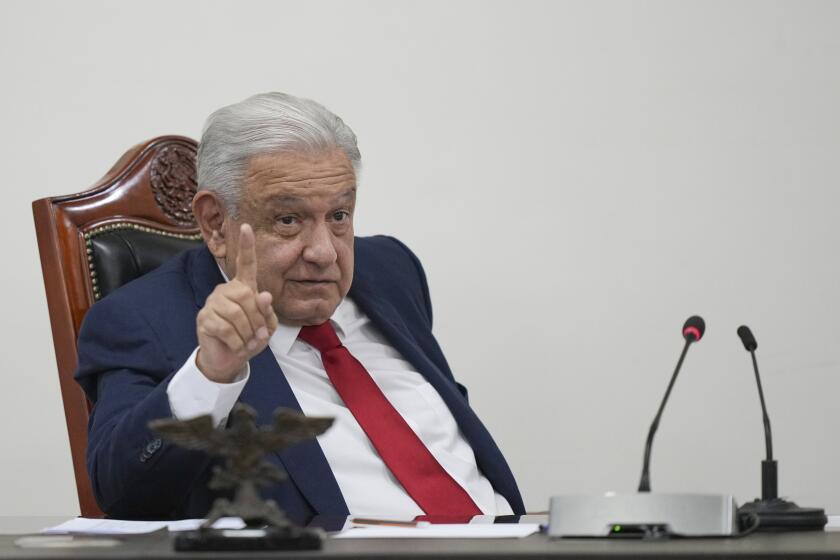U.S., Soviets, Japan Reach Tentative Air Traffic Pact
The United States, the Soviet Union and Japan have tentatively agreed to establish a new communications link aimed at preventing civilian airliners from straying off course when flying across the North Pacific, the government announced today.
The agreement would connect air traffic control centers in the three countries in a network that could be used if any civilian airliner is in difficulty or off course and heading over restricted Soviet territory, officials said.
The measure is aimed at preventing a recurrence of the September, 1983, incident in which a Korean Air Lines jumbo jet with 269 people aboard strayed over Soviet territory and was shot down, killing all aboard.
5 Hours in Soviet Airspace
The KAL jetliner was flying the popular northernmost route across the Pacific which for about 2,000 miles runs parallel to highly restricted Soviet territory and at times comes within 75 miles of Soviet airspace.
The plane was shot down after flying more than five hours in Soviet airspace, including over the militarily sensitive Kamchatka Peninsula and Sakhalin Island.
While air traffic controllers in neither the United States nor Japan have the capability to monitor aircraft on radar along the entire Pacific route, controllers in one of the three countries can track the aircraft at all times, aviation sources said.
“The Russians are the only ones who have radar (surveillance capabilities) along most of that route,” one source said.
Would Link Control Centers
Transportation Secretary Elizabeth Hanford Dole said that final arrangements for putting the communications network in place remain to be worked out but that a preliminary agreement to establish the network was reached Monday in Tokyo.
When implemented, the agreement provides for a network linking air traffic control centers in Anchorage, Alaska; Khabarovsk in the Soviet Union, and Tokyo.
The Federal Aviation Administration has said that its air traffic controllers in Alaska lost contact long before the Korean Air Lines jetliner strayed over Soviet territory.
While military radar in Japan may have picked up Flight 007 well before the Boeing 747 was shot down, its location was not relayed to civilian air traffic controllers.
More to Read
Sign up for Essential California
The most important California stories and recommendations in your inbox every morning.
You may occasionally receive promotional content from the Los Angeles Times.










